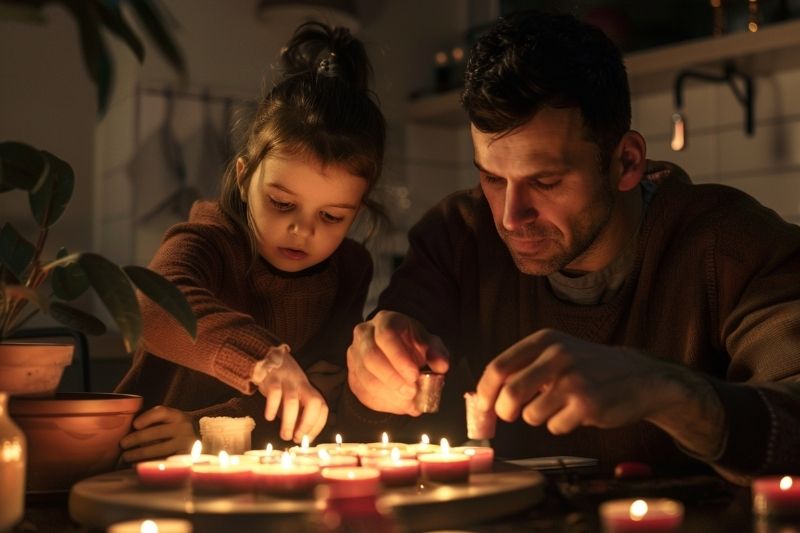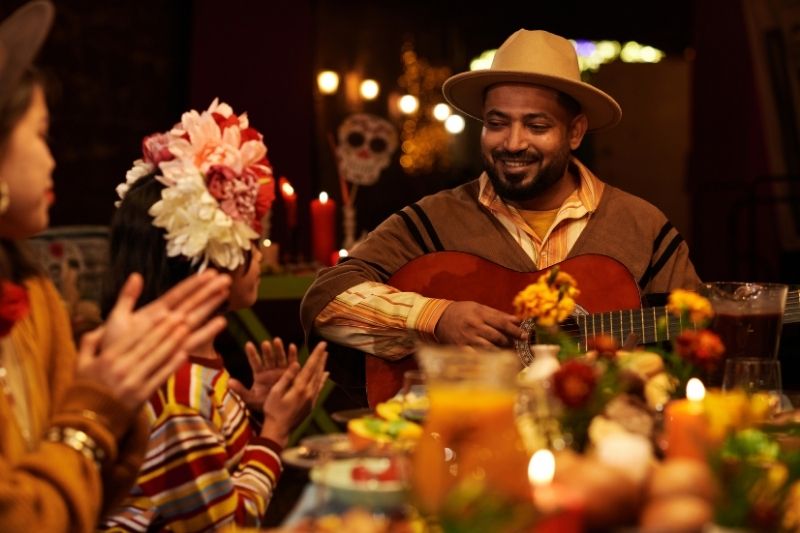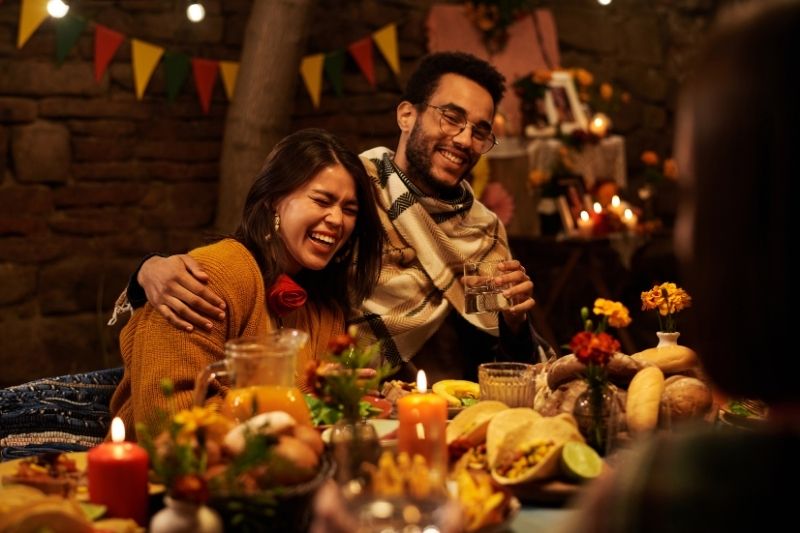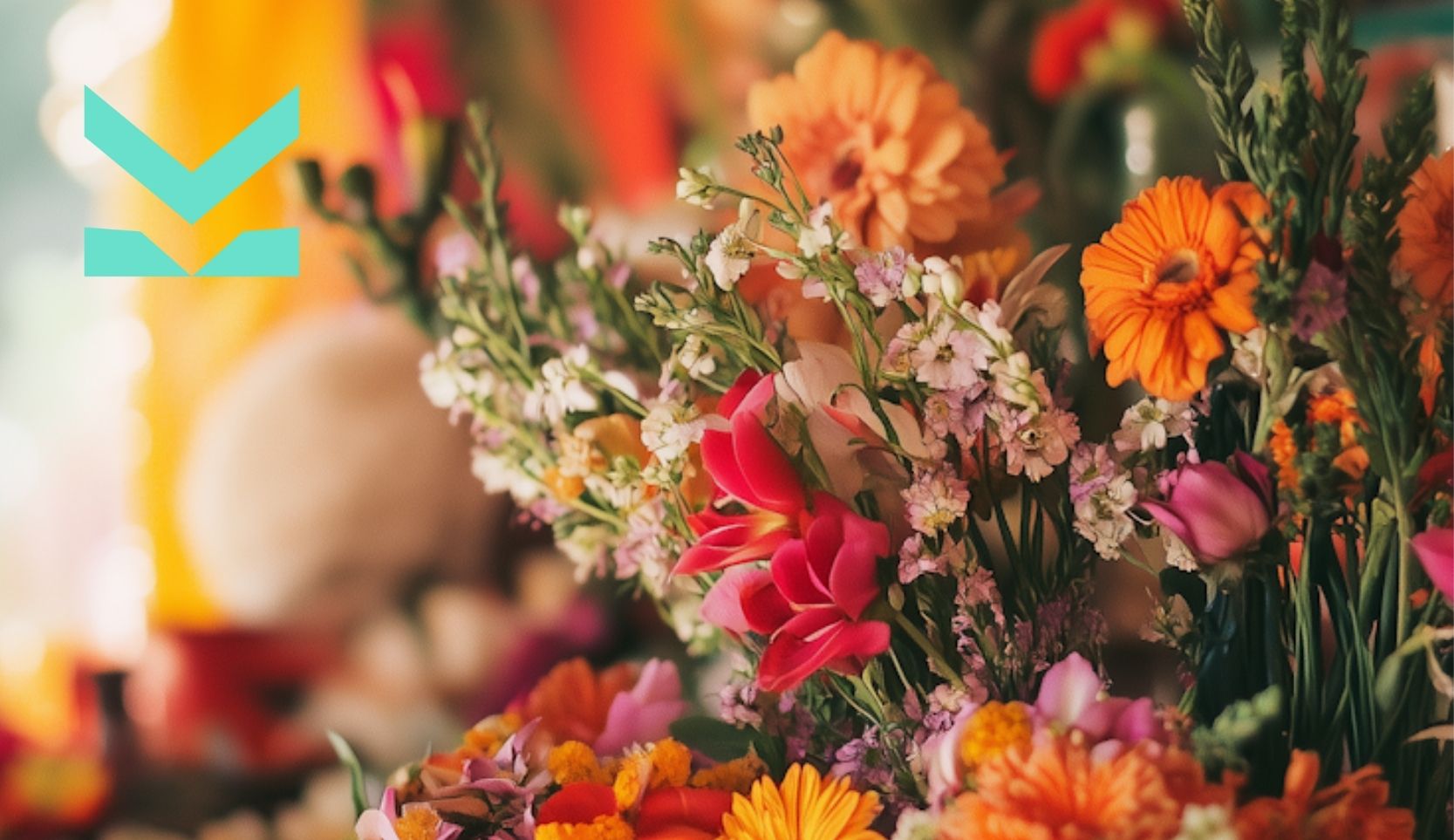Each All Souls Day we return, even if we are far away. We return with memory, with gestures, with what still unites us to those who are no longer with us.
We light a candle, We cook a dish that used to fill the house with aroma or simply quietly name that person we still love. Because that day is not only about remembering, but also about taking care of what is still alive in us: the gratitudethe love and the presence that is not extinguished.
In all America Latinathe All Souls Day is much more than a date on the calendar. It is a celebration that crosses generations, religions y borders.
At Mexico, colourful altars fill homes with life; in the Andes are prepared bread y flowers to share with the family; and in the Caribbean or in Central America, visit the cemetery with music, food y conversations. Each country has its own way of celebrating, but the meaning is the same: accompany with memory and care with affection.
And who we migrate We know well what it means to do it from afar. Every photo we keep, every message we send or every flower we leave in another land becomes a bridge. A gesture that says: we continue here, we continue remembering, we continue looking after.
What is All Souls' Day?

The All Souls Day, which is held every 2 November, is a date dedicated to honouring and remembering all those who have passed away, especially to our loved ones.
Your origin comes from the tradition catholic, The day was dedicated to praying for the souls who had not yet reached the fullness of heaven. Over time, this commemoration transcended the religious and became an important part of the cultural expression of memory and affection.
What does it mean “not having attained the fullness of heaven”?
In the Catholic tradition, It is taught that after death, souls can follow three possible paths:
- The sky, where those who have lived in grace and are in the presence of God dwell.
- The hell, for those who have completely turned away from the good.
- The purgatory, A place or intermediate state of spiritual purification.
The All Souls Day emerged as a day for remembering and praying for the souls in purgatory, Those who, according to the belief, have not yet reached the fullness of heaven because they need to complete their cleansing or reconciliation process before reaching it.
What is the difference with All Saints' Day?
The 1 November is held on All Saints' Day, The date is dedicated to honour all the people who, according to the catholic tradition, They have attained sainthood and enjoy the presence of God in heaven. It is a solemn and hopeful day, centred on the saints and martyrs recognised by the Church.
Both days share a common purpose: remembering and keeping alive the connection with those who have departed. However, the difference is in the approach:
- The All Saints' Day honour the saints, models of faith and virtue.
- The All Souls Day focuses on our own loved ones, on the families that remember them and on the bonds that persist beyond time.
Over the centuries, this religious distinction was transformed into a shared cultural traditionA space to come together, to pay homage and to express, each in our own way, that memory is also a form of presence.
What All Souls' Day means to us

A few days ago we celebrated the All Souls Day , It is a date that returns every year to remind us of who we are and where we come from.
At Latin America, this day is not lived in silence nor in solitude: you live in company, between flowers, songs, meals y memories that are shared as if time did not pass. More than a day to mourn, it is still a time to be thankful.
The origin of this tradition comes from the mixture of ancestral customs and Christian heritage. The villages originating already celebrated the return symbolic of the spirits to live with the live, and over time that vision became intertwined with the Catholic calendar, giving rise to what is now known as the All Souls Day, which is commemorated every 2 November, right after the All Saints' Day.
At Mexicothe altars colourful of shredded paper, sugar skulls and marigold flowers filled homes and streets.
At Bolivia y Peru, the families shared bread y offerings; in Guatemala, the skies were filled with kites giants; and in Ecuador, was served with purple colada together with guaguas de pan.
Each country experiences it in its own way, but we all share something profound: the desire to maintain the link, to care the memory, to continue to feel close to those we love.
The All Souls Day has just passed, but their message is still present: as long as we remember them, they are still with us.
How we experienced it from afar

“This year, the altar was not at home, but we still lit a candle. Because remembering can also be done from a distance”.”
A few days ago, while in our cities of origin the cemeteries were full of flowers and music, We live it differently, but with the same heart.
Those of us who are far away also had our own All Souls Day, one made of memories, photographs, phone calls and small gestures that cross borders.
Because, even if the place changes, love does not change.
Improvised altars in other countries
In many of the households in migrants, The altars were put together with whatever was at hand: a table, a printed photo, a candle, some flowers that resembled the ones from there.
In some cases, we put a cup of coffee or a plate of that person's favourite food. In others, a picture on the phone or a song shared as a family was enough.
Thus, since States United, Chile o Spain, We built small spaces where memory had its place, even if we were far from the cemetery where we used to go.
Flowers, photos and food that cross borders
There were also those who cooked, because memory has flavour. At Miami, New York o Good Aires were prepared tamales, bread, washes purple o arepas sweets, and at each table there was a common memory.
Some of us send photos by WhatsApp o we did video calls to accompany the family there, around the altar or in the cemetery.
That connection, even if it is digital, is also a way of being. It allows us to feel that we are still part of the All Souls Day, even if the ground beneath our feet is different.
Because distance changes the shape, but not the form. sentimentWe continue to remember, we continue to care, we continue to be part of it.
How to live in Europe

In Europe, the All Souls Day retains a more sober and contemplative sense than in Latin America.
Generally, it is commemorated on 1 and 2 November, coinciding with All Saints' Day and All Souls' Day on Catholic calendar.
During these days, the families often visit the cemeteries, clean the tombs and place flowersespecially chrysanthemums, It is a symbol of respect and remembrance. There is no music or large family gatherings: it is just another tradition. silent, marked by the introspection and the recollection.
- At Spain, cemeteries are filled with visitors who bring with them their flowers y candles, and in many regions classic plays such as Don Juan Tenorio are still performed, where the memory of the dead is at the centre of the cultural story.
- At France, on 1 November, The Toussaint, is day public holiday national and is dedicated to visiting the graves and decorating them with chrysanthemums.
- At Italy, families prepare traditional sweets as the “ossi dei morti”(bones of the dead) and the “pane dei morti”The "traditional" and respectful sharing of these gifts is a sign of tradition.
- At Portugal, it is common to attend mass and leave candles lit for the deceased, maintaining a sober and communitarian tone.
Unlike Latin America, where the All Souls Day is lived as a celebration of life, in Europe the idea of silence and contemplation prevails.
However, the purpose is the same: maintaining the link with those who left, even if it is from the calm, the flower and the discreet visit.
Caring also means remembering

The All Souls Day, as every year, but its echo remains. It reminded us, once again, that remember is also care: caring for what we were, what we learned and what we continue to share, even from a distance.
Each flower placedeach plate prepared, Each message sent was a simple way of saying “...", and each message sent was a simple way of saying "...".“here we continue”connected by something stronger than time.
On this day, the memory was not just a act from nostalgia, but of presence. Because when we think of those who were, We are also reaffirming what we are: a community that knows how to support, be accompanied y thank.
And even if the altars are dismantled and the candles extinguished, the most important thing remains: the certainty that love doesn't end, it just changes form.
At Curiara, We believe that every memory is also a gesture of care. Just as each sending sustains what we love, each memory keeps alive a part of those who accompanied us along the way.
That's why we're still here, connecting banks, and taking care of the presencewith word and with memory. Because in the end, to care is also to remember, And that, like true affection, has no boundaries.
